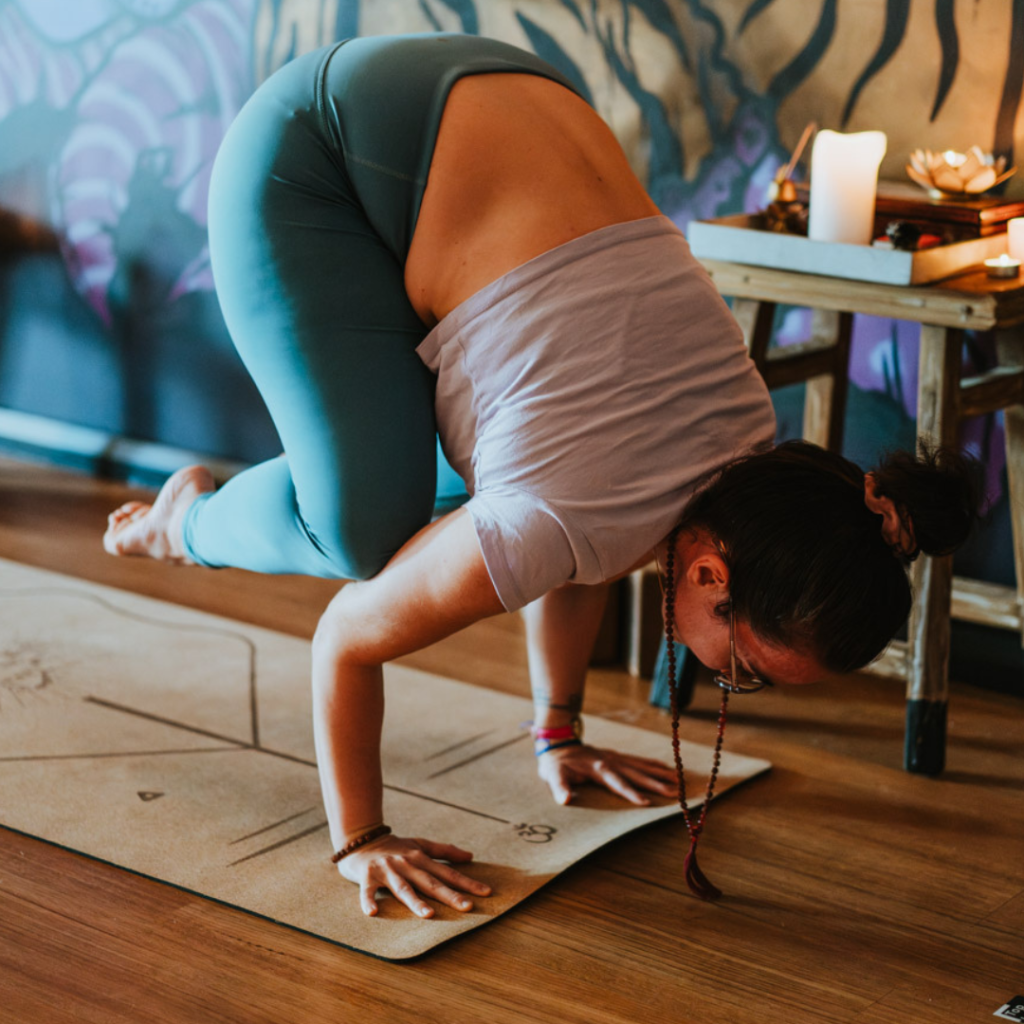Flying Pigeon Pose (Eka Pada Galavasana) is a challenging yet exhilarating asana that combines balance, strength, and flexibility. As one of the more advanced arm balances in yoga, this pose invites practitioners to explore their limits and expand their capabilities, both physically and mentally. We dive into the intricacies of Flying Pigeon Pose, highlighting how this posture can elevate your yoga practice to new heights.
Unfolding the Wings of Eka Pada Galavasana
Flying Pigeon Pose requires a mix of precise technique and fearless attitude. The pose begins with a deep squat, progresses into a forward fold with the arms wrapped around one leg, and culminates in balancing the body’s weight on the arms while extending the free leg outward. This complex series of movements demands concentration, coordination, and core strength, making it a test of both physical and mental acuity.
Physical Benefits: Enhancing Body Dynamics
The physical benefits of Flying Pigeon Pose are manifold. Primarily, it strengthens the arms, shoulders, and core, providing a robust workout that enhances muscular endurance and stability. Additionally, the pose improves flexibility in the hips and legs, particularly stretching the hip flexors and the glutes. By challenging the body to maintain balance, Eka Pada Galavasana also hones proprioceptive skills, which are crucial for all physical activities.
Mental and Emotional Resilience
Beyond the obvious physical demands, Flying Pigeon Pose offers significant mental and emotional benefits. The focus required to maintain balance in such a complex position aids in developing concentration and mental clarity. Additionally, mastering a pose as challenging as Flying Pigeon can lead to increased self-confidence and a sense of achievement, promoting an overall positive mindset.
Step-by-Step Approach to Mastering Flying Pigeon
- Begin in a low squat position, ensuring one ankle rests just above the opposite knee with the foot flexed.
- Carefully fold forward, placing your hands on the ground in front of you, spreading your fingers wide for stability.
- Slide the shin of your bent leg onto the backs of your upper arms, getting as close to the armpits as possible.
- Shift your weight forward, slowly lifting your lower foot off the ground as you straighten your arms, keeping the core engaged.
- Extend your free leg straight back, pointing your toes and lifting through the heel to maintain balance.
- Hold the pose, focusing on a fixed point in front of you for balance and breathing evenly to maintain stability.
- To exit, gently lower your feet to the floor and return to a squat position.
Integrating Flying Pigeon into Your Yoga Practice
Due to its complexity, Flying Pigeon Pose should be approached with caution and preferably after a thorough warm-up of the arms, legs, and core. It is ideal for including in sequences that focus on balance and strength or as a peak pose to challenge advanced practitioners.
Conclusion
Flying Pigeon Pose is a beautiful synthesis of strength, flexibility, and balance. It encourages yogis to push their boundaries and explore the potential of their practice. We encourage practitioners to approach Eka Pada Galavasana with patience and persistence, embracing the journey of growth and discovery that this challenging pose offers. Whether you are looking to enhance your physical abilities or your mental focus, Flying Pigeon Pose provides a unique and rewarding way to soar into new realms of your yoga practice.


